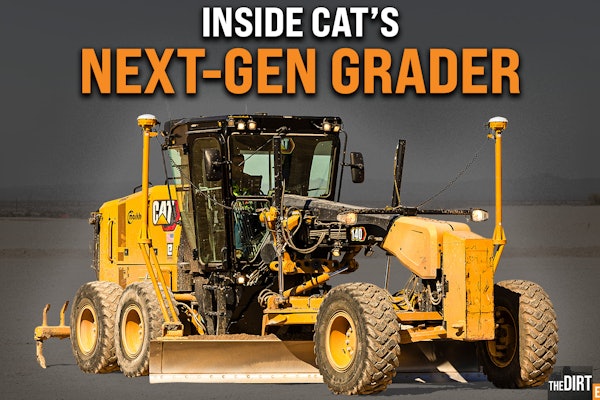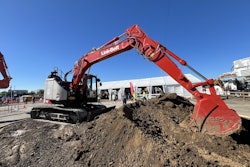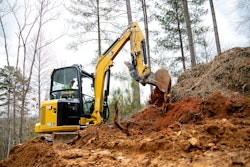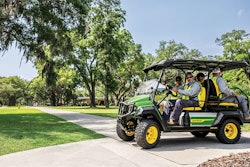In many cases, engines are the primary factor in determining the lifecycle of a piece of off-road equipment. The hours to overhaul differ a great deal due to a number of different variables. But armed with a best practices program you can maximize uptime and get a good return on your equipment investment.
For this article we talked with two experts at Cummins, Mike Brinker, director of industrial sales, and Dave Greiwe, manager of industrial customer support, to find out what a best practices program for engines would look like.
The customer decides
“The customer is a major decision maker in how long the engine is going to last,” Brinker says. As part of the design of a piece of equipment, the proper application, design of sub-systems, installation quality and engine load factor have a bearing, but an owner who has good maintenance and operating practices will keep his engine healthy far longer than those who don’t.
This is especially important once you understand that engines for construction equipment are generally selected to match the design lifecycle of the overall machine. For light and medium duty machines, this can be tied to the overall machine life. In some cases, the engine durability is matched to other major components. Heavy-duty equipment may be designed for multiple engine rebuilds. “OEMs strive to match the engine selected to the machine’s lifecycle,” Brinker says. That way the total life cycle cost of a machine, including the engine, is managed through scheduled maintenance periods, helping to lower the cost of ownership. When it comes time to rebuild an engine, it should occur around other major maintenance intervals, such as a rebuild interval for the transmissions, final drives or other major machine components.
Longevity issues
Thanks to better engineering, materials and manufacturing processes, diesel engines are getting to the point where midlife overhauls are a thing of the past.
“For most light- and medium-duty equipment, we have created engines that don’t consume a lot of parts. Engine components are designed to last the life of the engine,” says Brinker.
The first signs that indicate you need an overhaul include excess oil consumption, loss of power and smoke or blowing oil (blow by) from the breather tube – all symptoms of worn piston rings. Opening the crankcase and putting in a new cylinder kit gives you the opportunity to inspect a lot of other components, but in many cases, the rest of the engine should be fine.
Camshafts should be inspected at major overhaul, but typically do not need to be replaced. Major components like camshafts normally do not require replacement unless the engine is on its second or third rebuild, and in some cases this may be due to workmanship or improper valve/injector lash settings.
“Inline engines have a lot of bearing surface area designed in the crankshaft.” On large V-engines, most have large bearing surfaces, creating a robust bottom end that only requires bearings to be replaced during a major overhaul.
Fuel injectors need to be checked at recommended maintenance intervals. They may need replacement prior to overhaul although these too are becoming more durable. In some cases, installing new or remanufactured injectors is more cost effective (less equipment down time) than waiting to have the original parts inspected and tested. Some electrical components like starters may not last the full life of the engine where the duty cycle is severe, such as in rental machines because these customers do a lot of starting and stopping.
To rebuild or not to rebuild
When an engine nears the end of its first lifecycle, the decision to rebuild or replace it depends on many variables, such as the trade-in value and the condition of the rest of the machine and its components.
For an otherwise solid engine with worn piston rings, one low-cost option is to buy a rebuild kit with new pistons, rings, liners and gaskets. In the high-volume engine sizes these parts may cost you around 10 to 15 percent of the cost of the engine. At this point you may also need to replace the turbocharger, water pump, oil pump and the related seals and gaskets.
A more extensive rebuild would involve replacing the engine connecting rods, re-grinding the crankshaft and replacing a worn camshaft, although as mentioned earlier, these may not be necessary on the first rebuild.
With parts and labor the price of a major rebuild may run you 40 to 60 percent of the price of a new engine. Keep in mind the longevity of a non-certified rebuilt engine is dependent on the quality of the workmanship, replacement component quality and repair practices.
Factory certified replacement engines avoid all these uncertainties. With a core credit the reman engines cost 60 to 70 percent of the cost of a new engine. A reman engine from a factory certified source should last an equivalent time as the first engine, plus you get a warranty. In some cases, design improvements can be built in to a reman engine so that it will exceed the original engine’s life.
Duty cycle changes lifecycle
Even identical engines in identical machines may have dramatically different life spans if they are used in different applications. This big unknown variable is the duty cycle – a combination of the engine load and speed factors.
The load factor is a percentage calculated by dividing the actual fuel consumed by the maximum possible fuel consumption. So a machine running hard and burning as much fuel as it can physically burn would have a 100-percent load factor. A machine burning half the maximum possible fuel would have a 50-percent load factor. “On the small equipment you usually measure by the tankful. On the larger equipment you want to pay very close attention to the gallons per hour because that is a measure of productivity as well,” says Greiwe.
The speed factor involves the designed operating range of the engine (RPMs) during normal equipment use and the percent of time the engine spends at various speeds in this range. Generally speaking the lighter the load, the lower the rpms, the longer the engine will last. The rate of fuel burned also has a bearing on how frequently you change the oil.
Engines are typically rated with a particular duty cycle in mind. Engines in light-duty-cycle applications typically see a load factor of 25 percent or less. Intermittent-duty cycles can range from 25- to 75-percent, and continuous-duty cycle applications run with load factors of 75- to 100-percent. Don’t neglect
Routine maintenance
Just because today’s diesel engines are better engineered, that doesn’t mean you can slack off on routine maintenance.
A good example is the number of hours mining companies get on the engines that power their huge mining trucks. One reason these engines last so long is the precise care and maintenance they get. “With these million-dollar machines, the maintenance is excellent,” Greiwe says. “They’ve got the whole service department accountable.”
Most routine maintenance for today’s diesel engines is quick work – a few daily inspections and changing the fluids and filters at the scheduled time. “One step you don’t want to overlook is keeping the overhead set per the manufacturers recommendations,” Brinker says. “We want the clearance for the intake and exhaust valves and injectors for cam actuated injector engines checked. It’s mostly labor and a set of gaskets for the valve covers.”









